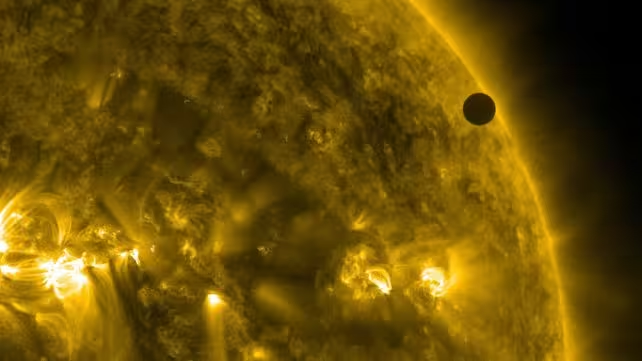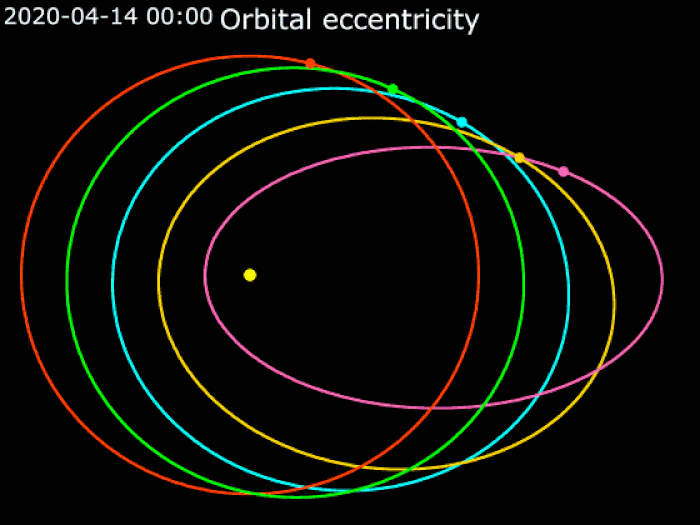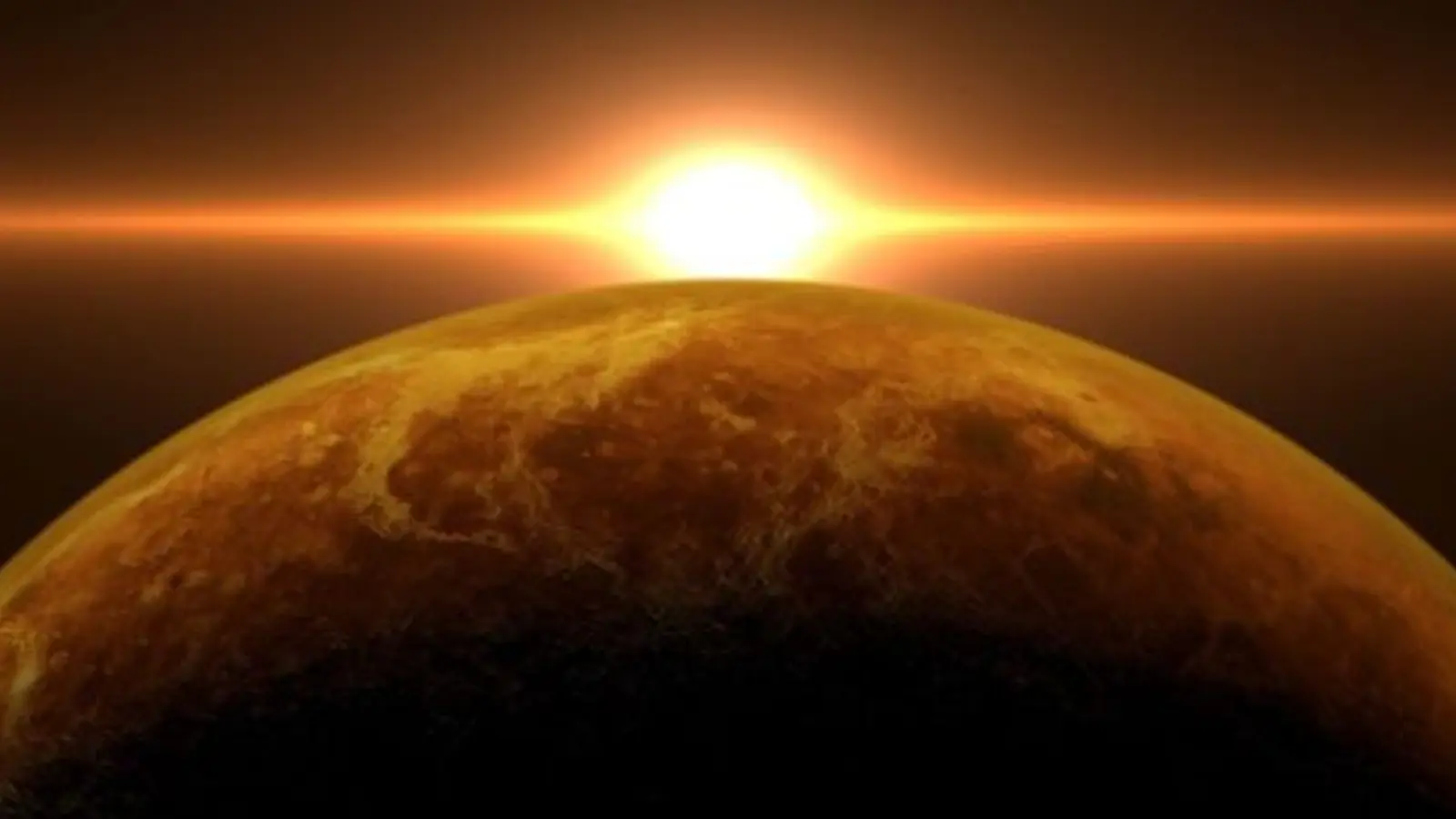6 Minutes
Why Earth may be blind to dangerous asteroids near Venus
Astronomers warn that a significant population of asteroids orbiting the Sun in the same region as Venus may be effectively invisible to ground-based telescopes. These so-called Venus co-orbitals—objects that share Venus’s orbital period around the Sun but do not orbit the planet itself—can remain hidden because they sit closer to the Sun than Earth does. From our vantage point, we must search toward the Sun to spot them, and any faint sunlight they reflect is overwhelmed by daylight and solar glare.

A Solar Dynamics Observatory image of Venus transiting the Sun. (NASA/SDO, AIA)
What are Venus co-orbitals and how do they behave?
Co-orbital asteroids trace complex paths that resonate with a planet’s orbit rather than orbiting that planet directly. For Venus, these objects sometimes lead the planet, sometimes trail it, and sometimes follow horseshoe or looping trajectories that cross the planet’s path in dynamic ways. To date, astronomers have identified roughly 20 confirmed Venus co-orbitals, but dynamical studies indicate that this discovered sample could represent only a small fraction of the true population.
Orbital stability and eccentricity
Known Venus co-orbitals generally have high orbital eccentricities (greater than about 0.38). Eccentricity measures how elongated an orbit is: a value of 0 is a perfect circle, while higher values indicate more stretched ellipses. High-eccentricity objects can swing farther from Venus and closer to Earth, making them temporarily easier to spot around twilight when the Sun is just below the horizon.
However, co-orbital dynamics are often chaotic. Simulations show that individual objects can change orbital configuration on timescales of roughly 10,000–15,000 years, and reliable predictions for a single object’s path degrade considerably after about 150 years. During a dynamical transition an asteroid can migrate from a Venus-resonant orbit into a trajectory that brings it near Earth — occasionally crossing Earth’s orbital path and potentially posing an impact hazard in the distant future.
Detection limits: why telescopes miss these objects
Most current sky surveys are optimized for objects visible at moderate solar elongations (angles away from the Sun). Objects with low eccentricity and small angular separation from the Sun remain in the daytime or twilight sky, where reflected sunlight from faint asteroids is drowned by the solar disk. Recent dynamical studies have therefore focused attention on lower-eccentricity co-orbitals that would remain much closer to Venus’s orbit and largely hidden from Earth-based observatories.

An illustration of a range of orbital eccentricities. (Phoenix7777/Wikimedia Commons, CC BY-SA 4.0)
Role of upcoming surveys
The Vera C. Rubin Observatory, with its wide field and large camera, will substantially advance the search for near-Earth objects. But simulation results indicate Rubin will detect only a subset of the lower-eccentricity Venus co-orbitals — typically within limited time windows each year when geometry and twilight conditions align. That leaves a persistent observational blind spot in the inner Solar System.
Space-based missions tailored to inner Solar System discovery could close this gap. NASA's planned NEO Surveyor mission, for example, is designed to detect asteroids using infrared observations from a solar-elongation vantage that is difficult to achieve from the ground. Even more effectively, a dedicated spacecraft in orbit around Venus or stationed in a Venus-like orbit would be positioned to observe those populations directly, day and night, with minimal solar interference.
Implications for planetary defense
Research teams estimate that objects in this hidden population could include bodies hundreds of meters across. An impactor roughly 300 meters in diameter could produce a crater several kilometers wide and deliver energy on the order of hundreds of megatons — destructive enough to cause regional devastation if it struck a populated area. Because many Venus co-orbitals have chaotic, evolving paths, some may eventually stray onto Earth-crossing trajectories over millennia.
“Our simulations indicate a class of asteroids that current ground-based surveys struggle to detect,” says Valerio Carruba, an astronomer at São Paulo State University whose team modeled the dynamical space around Venus. He emphasizes that while known co-orbitals are only a few dozen objects, computational models predict a substantially larger undetected population that warrants targeted observation campaigns.
Strategies to reduce the inner-Solar-System blind spot
Addressing the detection shortfall requires a combination of ground and space assets. Expanded twilight surveys and optimized cadence at ground telescopes can catch some objects when geometry permits. More critically, missions that operate closer to the Sun—either in a Venusian orbit, at interior heliocentric stations, or via infrared space telescopes like NEO Surveyor—offer the most comprehensive coverage for finding faint co-orbitals.
Beyond discovery, characterizing sizes, orbits, rotation states, and surface properties is essential for impact risk assessment and potential mitigation planning. Any early-warning benefits from new detections will be magnified by follow-up observations that refine orbital predictions beyond the 150-year reliability horizon typical of chaotic co-orbital dynamics.
Expert Insight
Dr. Priya Anand, a planetary scientist and mission concept specialist, comments: "Detecting Venus co-orbitals is a central challenge for 21st-century planetary defense. Ground-based surveys will improve our sensitivity, but a space-based observatory near Venus or an infrared scout like NEO Surveyor would transform our capability to catalog inner-Solar-System hazards. Early detection gives us options — from monitoring and characterization to, in the extreme case, mitigation planning decades in advance."
Conclusion
The discovery that a large, largely unseen population of Venus co-orbitals may exist underscores a key vulnerability in current near-Earth object surveillance. While upcoming telescopes such as the Vera C. Rubin Observatory and missions like NEO Surveyor will reduce the blind spots, the most reliable path to a complete inventory of these inner-Solar-System asteroids is a dedicated observing campaign from a space platform with a vantage point near Venus. Strengthening that capability will improve long-term planetary defense and help ensure that potentially hazardous bodies are identified well before they can threaten Earth.
Source: sciencealert


Leave a Comment